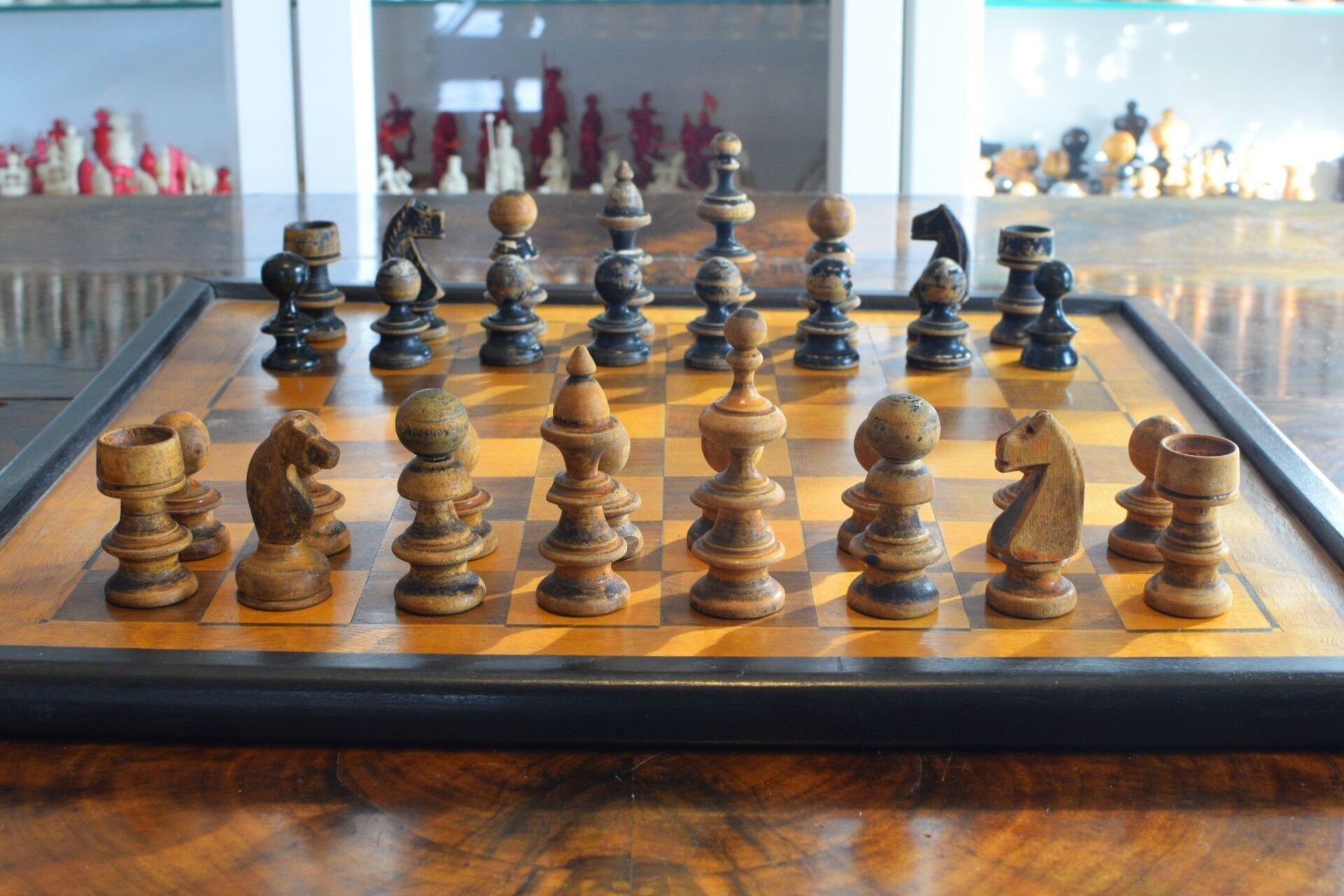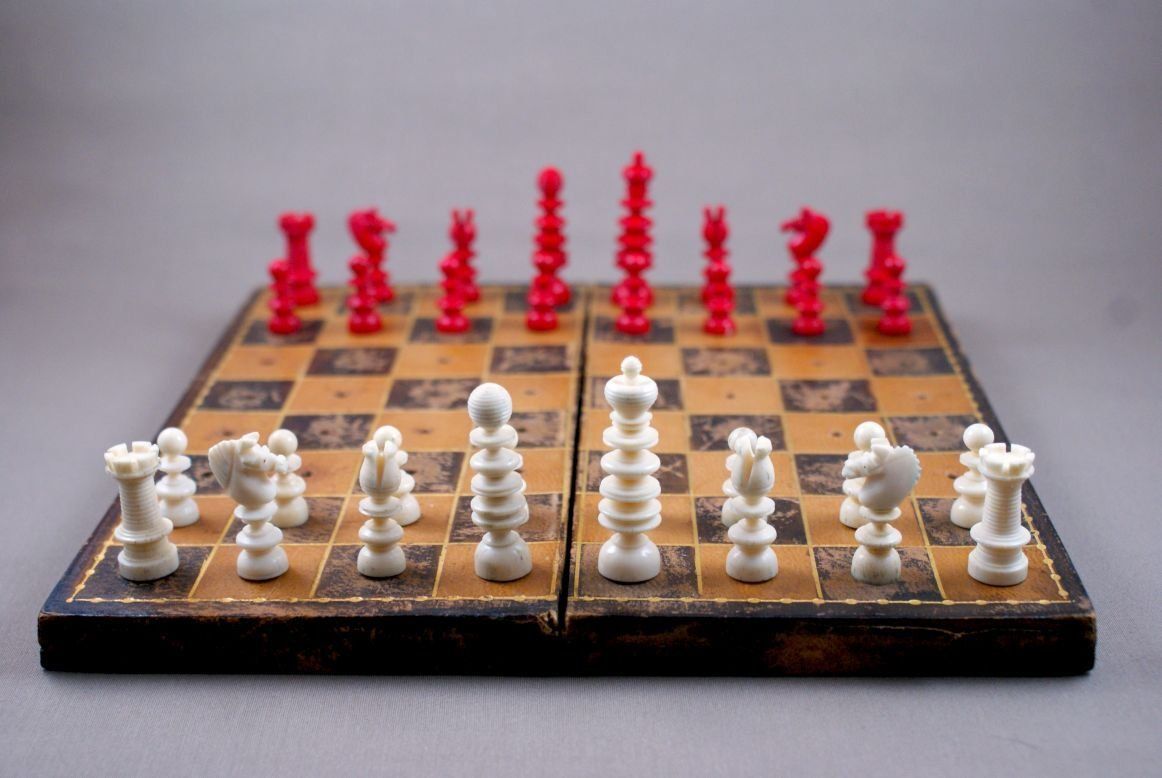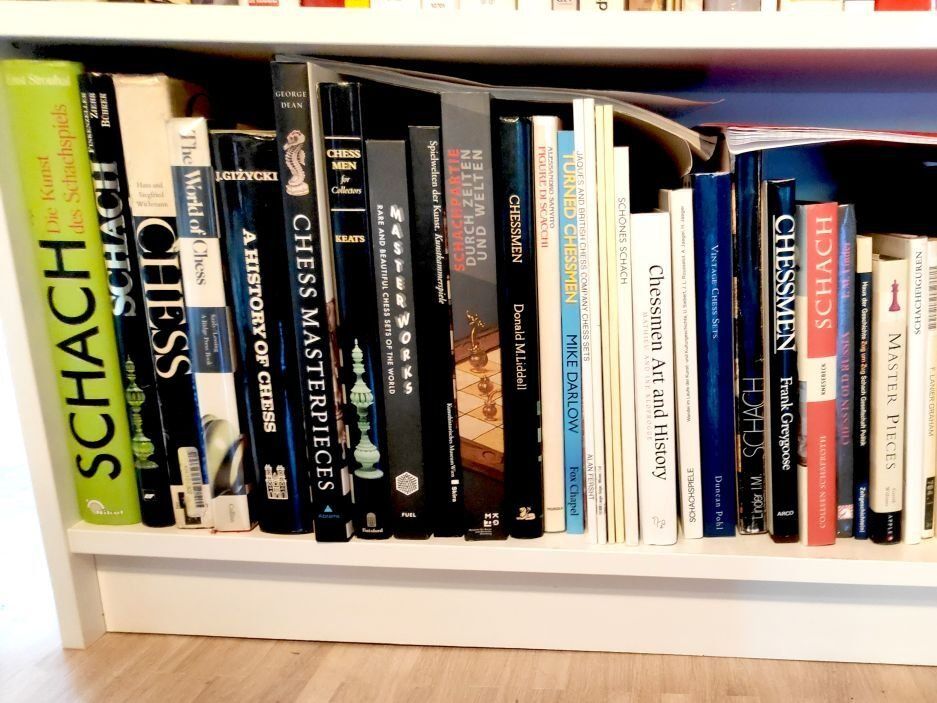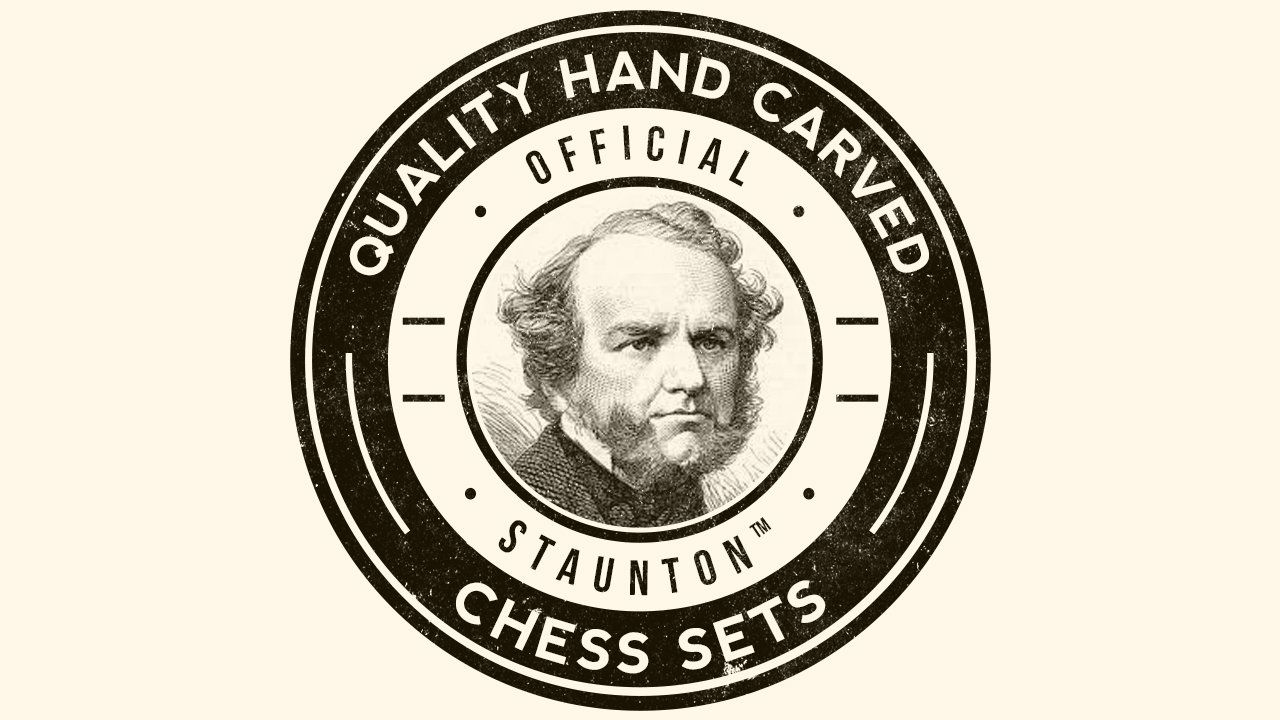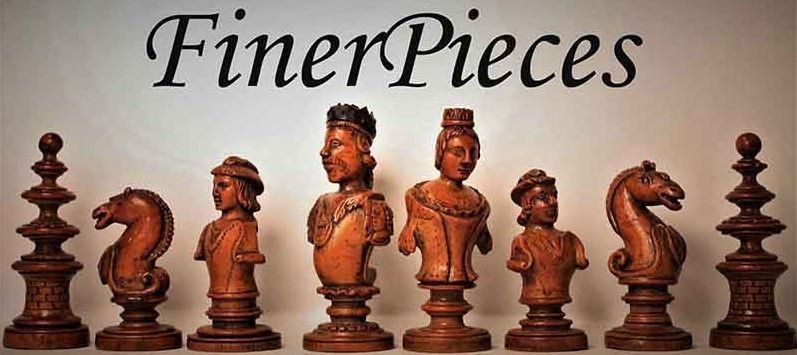French Ivory Bust Chess Set, Dieppe, late 18th century
These chessmen are of the so-called Dieppe type. Dieppe is a small town located about 150 km northwest of Paris on the English Channel. It is, or rather was, the ivory carving center of France. Ivory carving is linked to Dieppe as early as the 14th century. Dieppe ivory turners and carvers were renowned for their artistry, who is said to have been second to none. Since Dieppe hosted one of the most important trading ports with the French colonies in Africa, ships brought, inter alia, a large quantity of ivory. The local craftsmen turned this material into a variety of products, among the rarer of which were some distinctive chess sets. Dieppe chess sets are characteristic in several ways, inter alia in that the pieces are often bust type depictions of European royalty versus African royalty or Moor rulers, all of which are mounted on a turned base. In the set shown here, the white king of the European side - like the queen - wears a curly wig under his crown, which is tied into a plait at the back, while the red king - like the red queen - is depicted with short frizzy hair typical of an African wearing the crown on a cloth headdress. The rooks in Dieppe chess sets are usually cylindrical with a crenellated brickwork design. Most antique chess sets from Dieppe have one feature that is very noticeable: The bishops appear to be comical characters, with contorted faces and haughty expressions. The reason is that in French bishops are called “fous”, i.e., fools, or court jesters. However, this applies to many Dieppe chess sets, but not to all. The bishops in the set shown here seem to have rather normal expressions and are wearing a cap. Knights in some Dieppe sets are represented as horses mounted with a rider, which are also referred to as “hobby-horse” knights. The design of the rider can provide some clues for dating this set, as he is wearing a tricorn, which was a common headgear for officers until about 1780, before it was gradually replaced by the bicorn. The other piece that allows the dating of a set is the pawn. Earlier ones from the late Louis XIV and early Louis XV period are wearing caps followed by pawns with wigs, which can easily be dated thanks to engravings showing the contemporary fashion. The pawns in the chess set shown here are wearing wigs from the Louis XV period, i.e. from approximately 1720 to 1780. Together with the other clues from the design of the individual pieces, I would therefore date the set to around 1750 to 1780.

